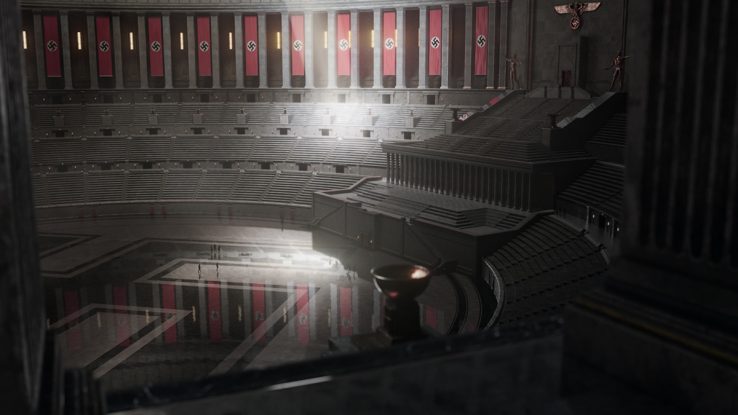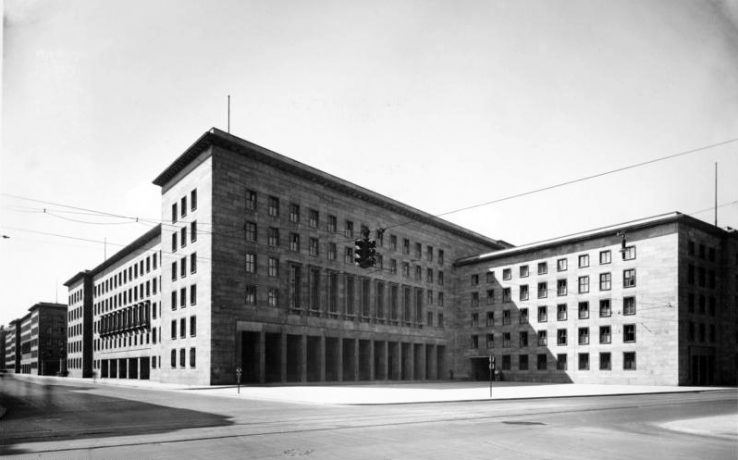
When you look at the projects that the Nazi government tackled, you cannot rid yourself of the feeling that they had a grandiosity fetish.
To put it in more direct terms: Megalomania was an intrinsic feature of the system. World domination, tank-battleships like the Landkreuzer Ratte and the drastic redesign of Berlin into the capital of the world — Germania.
Looking back, it is easy to see why this project would have ultimately been doomed to fail. But there have also been some fascinating engineering feats along the long and abortive way to its completion which deserve closer scrutiny.
Germania was the vision of Adolf Hitler, but it was the genius of Albert Speer who was tasked with making it real.

Speer is one of those historic figures who is remembered as a villain because he worked for the wrong people. If Speer’s zeal and genius had been put to work by another government, his buildings might still be standing as witnesses to his skill and talent.
Some of Speer’s work foreshadowed what Germania would have been like, but the actual project never went very far. Some minor buildings were finished, but the monumental architecture never went beyond some preliminary construction and testing. In 1943, the course of the war brought the project to a halt altogether.






Had Germania been completed, we would now have had the dubious pleasure of seeing the Volkshalle dominating the Berlin cityscape. This “People’s Hall” would have been a gigantic domed structure, somewhat resembling the United States Capitol in Washington DC and Saint Peter’s Cathedral in Rome, but several times their size.
Fun fact: There would probably have been a constant light rain inside. Yes, the Volkshalle would have had its own microclimate, with the moisture from breath and other bodily fluid vapors accumulating under the domed ceiling and returning in downpour.
Then again, most of Germania might well have been impossible to be constructed in Berlin without some major soil work. The German capital was built on drained marshland, not the most solid of grounds.



Speer was aware of the problem and had an experimental device constructed to test the feasibility of his plans — a Prüfkörper (“testing device”). Ironically, it is the sole survivor of Speer’s work in Berlin.
The mushroom-shaped construction is now classified as a historic landmark and it is still fulfilling its intended purpose — testing wether or not the pressure that the great Volkshalle would have put on the soil could have caused it to sink. It would have. The Prüfkörper is still sinking a bit every year.
So the Volkshalle would have been doomed from the start even if Hitler and his men had gone ahead with its construction anyway. Maybe the eventual collapse of the Volkshalle would have been blamed on members of yet another unwanted group or country and used as a pretense for more pogroms and war?
Whatever the ultimate fate of the centerpiece of Speer’s plans, other aspects of the rebuilding and reconstruction of Berlin would have been far more devastating to the historic cityscape.
The plans involved grandiose avenues leading toward the Volkshalle and official party buildings. For these broad streets, huge swathes of Berlin would have had to be torn down, effectively removing all regular housing. Central Berlin would have been turned into a sterile political center, a stage for party rallies and mad politics but devoid of real life.
Hitler and Speer had already planned for this. A new city would have been built in the Grunewald forest on the outskirts of Berlin to accommodate the Berlin citizens displaced by the monumental construction effort.
Today, little remains of Germania. Most structures were bombed or razed by the Allies, but some of the lesser buildings which would have been pieces of the grand design remain. Among them is Hermann Göring’s Air Ministry, which was finished in 1935 and now serves as the home of the Ministry of Finance of the Federal Republic of Germany. Quite an ironic twist, I think.
This story first appeared in Gatehouse Gazette 20 (September 2011), p. 19-20, with the headline “Hitler’s Nightmare Capital of the World”.






